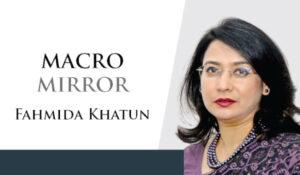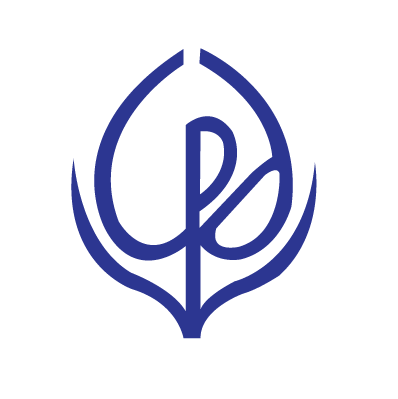Originally posted in The Daily Star on 23 September 2025
 In the run-up to the 30th UN Climate Change Conference (Conference of the Parties-COP 30), Bangladesh is preparing its third Nationally Determined Contribution (NDC 3.0). This is part of the country’s commitment under the Paris Agreement, a legally binding treaty adopted by 195 countries in 2015 to address climate change. Initially, in its Intended Nationally Determined Contributions (INDC), Bangladesh committed to reduce greenhouse gas (GHG) emissions in the power, industry and transport sectors by 15 percent below the business-as-usual levels within 2030. Of this target, five percent was unconditional, meaning it would be achieved without any external aid, and 10 percent was to be achieved with international technical and financial support.
In the run-up to the 30th UN Climate Change Conference (Conference of the Parties-COP 30), Bangladesh is preparing its third Nationally Determined Contribution (NDC 3.0). This is part of the country’s commitment under the Paris Agreement, a legally binding treaty adopted by 195 countries in 2015 to address climate change. Initially, in its Intended Nationally Determined Contributions (INDC), Bangladesh committed to reduce greenhouse gas (GHG) emissions in the power, industry and transport sectors by 15 percent below the business-as-usual levels within 2030. Of this target, five percent was unconditional, meaning it would be achieved without any external aid, and 10 percent was to be achieved with international technical and financial support.
In its second NDC (NDC 2.0), Bangladesh committed to reducing GHG emissions by 6.73 percent below the business-as-usual levels by 2030 without any external aid. With international support, it committed to a steeper reduction of 15.12 percent. This implies that it offered a potential reduction of GHG emissions by 21.85 percent within 2030. This is equivalent to 89.47 million tonnes of carbon dioxide (MtCO2e). The sectors set to contribute to such emission cuts include energy, cement and fertiliser, agriculture, livestock and forestry, and municipal solid waste and wastewater.

NDC 3.0 should not limit the focus to carbon reduction targets only. How climate action can transform Bangladesh’s economy and society in ways that are not only environmentally friendly but also equitable, inclusive, and sustainable should be at the core of the NDC 3.0 framework. Just transition should be at the centre of it; it should provide a comprehensive development pathway that ensures that decarbonisation also generates employment and social justice.
To understand why a just transition must be central to Bangladesh’s climate strategy, it is important to place it within the NDC frameworks. Under the Paris Agreement, every country is required to submit an NDC, which outlines its commitments to reduce GHG emissions and adapt to climate impacts. These NDCs are revised every five years, with the expectation that each time countries will announce more ambitious targets and provide clearer strategies for achieving said targets. However, NDCs should not be viewed as merely technical reports for submission to the UN. These are indeed part of the national development strategy that will have implications for our economic and social outcomes.
Bangladesh has been showing progress in meeting its emission reduction pledges, but challenges in implementation are evident. Its economy still relies heavily on RMG exports. The RMG industry is facing increasing pressure from international buyers who now demand higher compliance with climate and sustainability standards. The energy and power sectors depend on imported fossil fuels, which pose environmental and financial risks. In the case of agriculture, while the effects of climate change increasingly threaten the sector, it also needs to adopt climate-resilient and low-emission practices.
Therefore, stakeholders, particularly climate activists, are calling for a more ambitious NDC 3.0. Bangladesh is expected to raise its renewable energy targets much higher and decarbonise other sectors at a much bigger rate. There is also a demand for aligning the country’s emissions reduction targets with international best practices. Since Bangladesh is integrated into the global economy, it cannot avoid its responsibility in reducing emissions. Integrating just transition into NDC 3.0 is thus about ensuring that Bangladesh’s economy remains competitive in a rapidly changing global landscape.
There are several reasons for embedding just transition into NDC commitments. First, climate action must align with the country’s development priorities. Decarbonisation without just transition will have a negative impact on employment, deepen inequality, and obstruct poverty reduction. Within the framework of just transition, climate policies should be designed to create new opportunities for green growth, industrial upgrading, and skills development. Second, the scale of employment vulnerabilities should be taken into consideration. Millions of workers in the RMG, transport, agriculture and energy sectors will be directly affected by policy changes towards a green transition. If these workers are not reskilled and redeployed into new, climate-friendly industries, the transition could generate economic and social instability.
Third, social justice must be in consideration. Bangladesh is already among the most climate-vulnerable countries in the world, with millions living on the margins. A transition that neglects regional balance within the country, gender sensitivity, and the needs of rural communities who are most at risk, will risk leaving the country further behind. Fourth, as global trade rules become stricter on the carbon content of goods and services, industries must not only decarbonise but also transform their whole production systems. A just transition framework would enable industries not only to adapt, innovate, and remain competitive, but also to manage their workforce challenges in a fair and equitable manner.
What might this look like in practice? An NDC 3.0 that includes just transition would need to prioritise job creation and skills development. Bangladesh needs to update its employment strategy to prepare workers for jobs in renewable energy, energy-efficient industries, digital services, green construction, climate-resilient agriculture, and other related sectors. Technical and vocational institutions would need to adapt their curricula to meet these demands. Industries should be incentivised to invest in workforce training in view of the green compliance requirements.
Integrating just transition principles into various policies, including industrial, trade, agricultural, energy and employment, is equally important, as climate change is a cross-cutting issue. These policies must be aligned with NDC 3.0 so that climate targets are not isolated commitments but part of a broader economic strategy. Just transition also requires small and medium enterprises to have access to concessional finance to adopt cleaner technologies. Besides, supply chains must be diversified to respond to changing global markets.
Youth and gender dimensions must also be central to a just transition. Bangladesh’s demographic dividend can only be harnessed if young people are given opportunities in areas such as climate innovation, start-ups, and green digital platforms. Women, who are heavily concentrated in RMG, agriculture, and informal employment, must be included in the transition. Designing programmes with a gender lens would ensure that women gain access to new skills and jobs in the green economy.
A just transition necessitates robust governance. Clear monitoring indicators should be established by the government to track progress towards a just transition. This is essential for creating green jobs, reskilling workers, and ensuring the fair distribution of benefits.
The road ahead is challenging. Climate change is already transforming Bangladesh’s economy and society. The choice we face is not whether to transition, but how to do so. A transition lacking justice risks deepening inequalities and weakening social cohesion. A fair transition would ensure that climate action benefits are broadly shared, workers are protected, and industries are enhanced rather than harmed. Ultimately, our future must be judged by not only how quickly we reduce our emissions, but also how fairly and inclusively we achieve it.
Dr Fahmida Khatun is executive director at the Centre for Policy Dialogue (CPD). Views expressed in this article are the author’s own.



